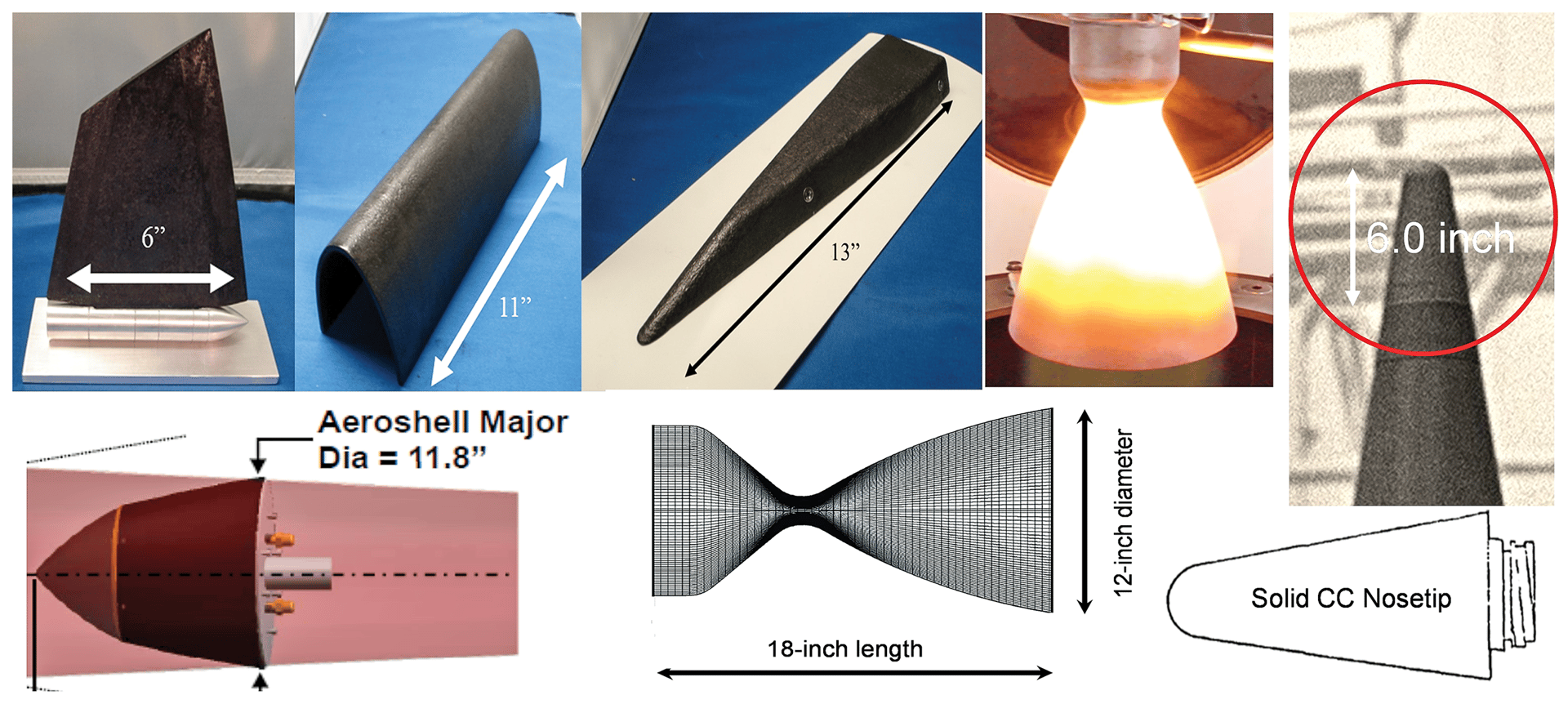
Advancing a new era for aerospace:
Ultrahigh-density carbon–carbon composites through safe and affordable FAST processing
By Edward J. A. Pope
bulletin | feature
Field assisted sintering technology developed by materials research and development company MATECH produces a new class of ultrahigh-density carbon–carbon composites for next-generation aerospace applications.
ADVERTISEMENT
Since their first demonstration in 1958, carbon–carbon composites are now commonly used in defense and aerospace applications.
Carbon–carbon composites are thermally stable composites composed of carbon fibers and matrix phases. These materials, which are classified as a “critical technology” by the U.S. Department of Defense, are used in ballistic nosetips; rocket motors; and reentry materials, such as heat shields and aeroshells.
Current carbon–carbon composites are typically created through a polymer infiltration and pyrolysis process and have somewhat low bulk densities around 1.60 g/cc. Carbon–carbon composites with higher bulk densities are desirable because this property equates to improved performance in other areas, including higher hardness, higher thermal conductivity, and greater mechanical erosion and abrasion resistance.
Higher bulk densities of about 1.95 g/cc can be achieved using the hot isostatic pressure impregnation carbonization (HIPIC) process. But this process, developed decades ago to fabricate nosetips for intercontinental ballistic missiles, is considered dangerous, very expensive, and difficult to implement.
Materials research and development company MATECH (Westlake Village, Calif.) recently developed a patent-pending technology for making an entirely new class of ultrahigh-density (UHD) carbon–carbon composites. This development extends MATECH’s prior work on the densification of SiC/SiC and C/SiC ceramic matrix composites using field assisted sintering technology (FAST).1,2
The new FAST process achieves UHD carbon–carbon composites with bulk densities greater than 2.20 g/cc. Not only are these bulk densities higher than those achieved with the HIPIC process, but MATECH’s technology is also safe, affordable, and easy to implement.
MATECH’s FAST densification process can be performed in only 10 minutes, which means the technology is readily scalable to create UHD carbon–carbon composites for use as ballistic nosetips, rocket nozzles, and leading edges of aircraft, among other components (Figure 1). Even larger components, such as hypersonic aeroshells, are feasible with larger equipment. MATECH is in close contact with global equipment manufacturers and service providers to manufacture parts in the 2.0-meter x 1.0-meter size range, prompted by a specific customer requirement.

Figure 1. Pictured are example components that can be manufactured by MATECH’s FAST ultrahigh-density carbon–carbon processing technology. Clockwise from top left: control fin, rounded leading edge, strake leading edge, thin wall thrust nozzle, solid intercontinental ballistic missile nosetip, integrated composite nozzle and exit cone schematic, and thin wall hollow nosetip.
Credit: Edward J. A. Pope
In addition to the economic and safety benefits of MATECH’s FAST densification process, the resulting UHD carbon–carbon composites offer several performance benefits beyond higher bulk density. For example, modeling predicts ablation resistance 20 times higher than conventional carbon–carbon composites and five times higher than HIPIC carbon–carbon composites. A higher ablation resistance means the shape of the nose tip or leading edge is retained much longer, thereby maintaining its aerodynamic predictability. Lower ablation resistance, on the other hand, leads to severe shape changes that make aerodynamic behavior less predictable.3,4
Additionally, extensive fiber pull-out upon fracture has been documented by optical fractography (see Figure 2). This behavior can lead to a 20-times increase in toughness of a composite prior to ultimate failure compared with a monolithic material of comparable composition.
As society advances toward a new era for aerospace, MATECH’s FAST technology will help realize these lofty goals.
About the author:
Edward J. A. Pope is CEO of materials research and development company MATECH (Westlake Village, Calif.). Contact Pope.

Figure 2. Optical fractography of extensive fiber pull-out in MATECH’s FAST-densified carbon–carbon composites.
Credit: Edward J. A. Pope

SIDEBAR
Sidebar Headline
Text

